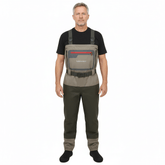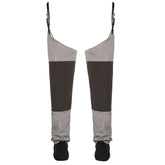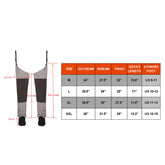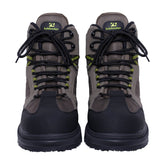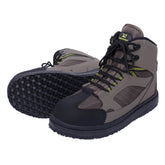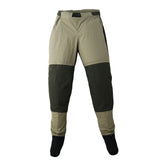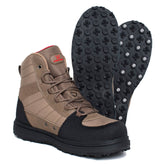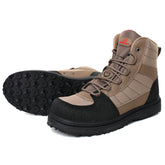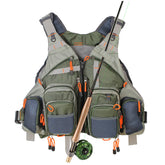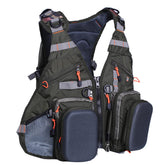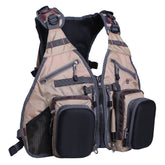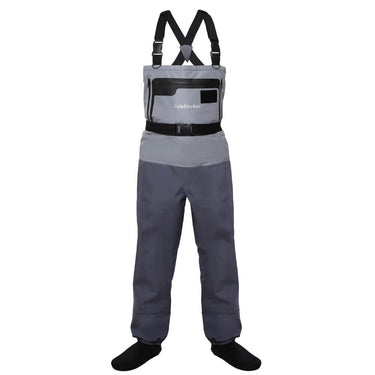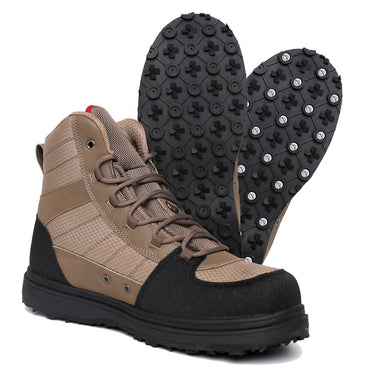How to prepare fly fishing gear for striped bass

Striped bass is a common species in fly fishing and many people love to fly fish for this fish. Because these fish are easy to encounter in a variety of waters I think they are far more powerful than their weight and are not very picky about their lures. Every spring I fly fish for striped bass with an 8lb rod and the appropriate matching fly reel.
For fly fishing the corresponding species of fish, we need to have a certain understanding of their habits, in order to win a hundred battles.
Striped bass live in waters within 10km of the sea (especially preferring bays). However, they enter freshwater to spawn. They are nocturnal animals and are particularly active at night; the sound of lapping water is often heard late at night near their habitat in the quiet. They feed on small fish and crustaceans, etc., and breed in autumn and winter.
Because striped bass are sensitive to temperature, between 55°F and 68°F. Therefore, both too cold and too hot will force striped bass to migrate. Thus, in the fall, northern striped bass will migrate south; in the spring, striped bass will migrate north. Not all striped bass will migrate, but many of the smaller striped bass (under 30") will stay, and these holdovers (or locals) are called Schoolies, and when these youngsters rise above 30", they will basically start migrating as well.
In the spring, the striped bass will go to the inland rivers to spawn, and when they are done, they will go offshore to regroup. When the water temperature rises above the acclimation temperature for striped bass, they migrate north in groups. Many striped bass will stop when they reach New England, but some will stop as far as Canada.

When the water temperature drops, the striped bass migrate south. late September in New England, October to November in New York State, December in New Jersey, and January in MD and VA. striped bass at this stage feed heavily to get their fall fat. Therefore, fly fishing for striped bass is basically this stage.
Steps for fly fishing for striped bass

First you look for the striped bass depending on where you are and what environment you are in, finding it is half the battle, so knowing your environment and knowing what to look for is crucial.
Knowing where striped bass are in what season and what they eat will allow us to determine more accurately what lures to use and how the lures will move through the water to be attractive to fly fishing for striped bass. I'll share here how I determine the presence of striped bass in a body of water, I'll draw on the fishing behavior of birds in this body of water to determine if there are striped bass in the water, but of course this is just one of my common methods.
Proper selection of fly fishing rods
Picking the right fly fishing rod is crucial. I personally think a 9wt rod is the most suitable, if you are a beginner I personally recommend a 7/8wt. Of course a suitable reel is essential, I prefer Sage Spectrum C 7/8 and RIO Bonefish WF
Striped bass seasonal characteristics
In the winter, bays and river inlets are better fly fishing locations. In early spring it will be easier to spot larger females. As the temperature of the season gradually rises shift your fishing spot to the tidal area, as this is where the baitfish gather and where the bass feed. When the females have spawned, it is also a time of hunger and aggression. It is easier to fly fish for larger female striped bass during this time.
What the striped bass eat will be the key to your success. The striped bass diet includes (but is not limited to): sea mussels, eels, sandworms, herring, mackerel, etc. They eat everything. So the corresponding simulated lures should not be burned. And of course don't prepare too much. Just use some of each pattern in different weights if needed.
Suggestion: Once you have identified a water, even if your equipment is in place, take some time to observe the water conditions, especially the tidal changes at the inlet, as striped bass move with the tide.
Article refer:
1.Basic Fly Casting Techniques -Two Stroke Casting
2.Various Types of Fly Fishing Haul Casting Techniques
3.Some Roll Casting Technique For Beginner
4 tips for beginner musky anglers
5.Favorite Fly Patterns for Lakes
6.Can You Fly Fish in Windy Conditions? (7 Tips to Cast in Wind)
7.What equipment is needed for fly fishing for sockeye salmon?
8.How to prepare fly fishing gear for striped bass?
9.The Five Stages of Fly Fishing
10.Flying gear: six fishermen necessities
